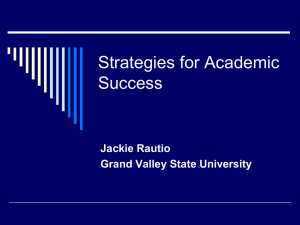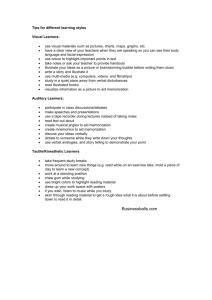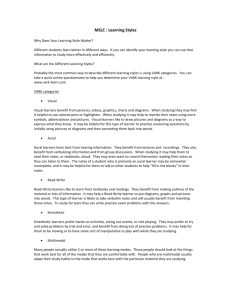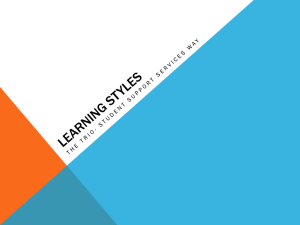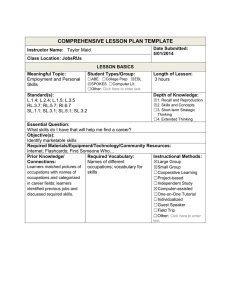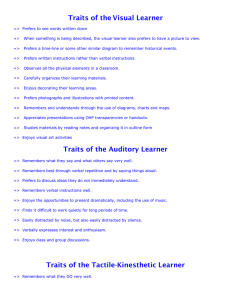Learning Styles
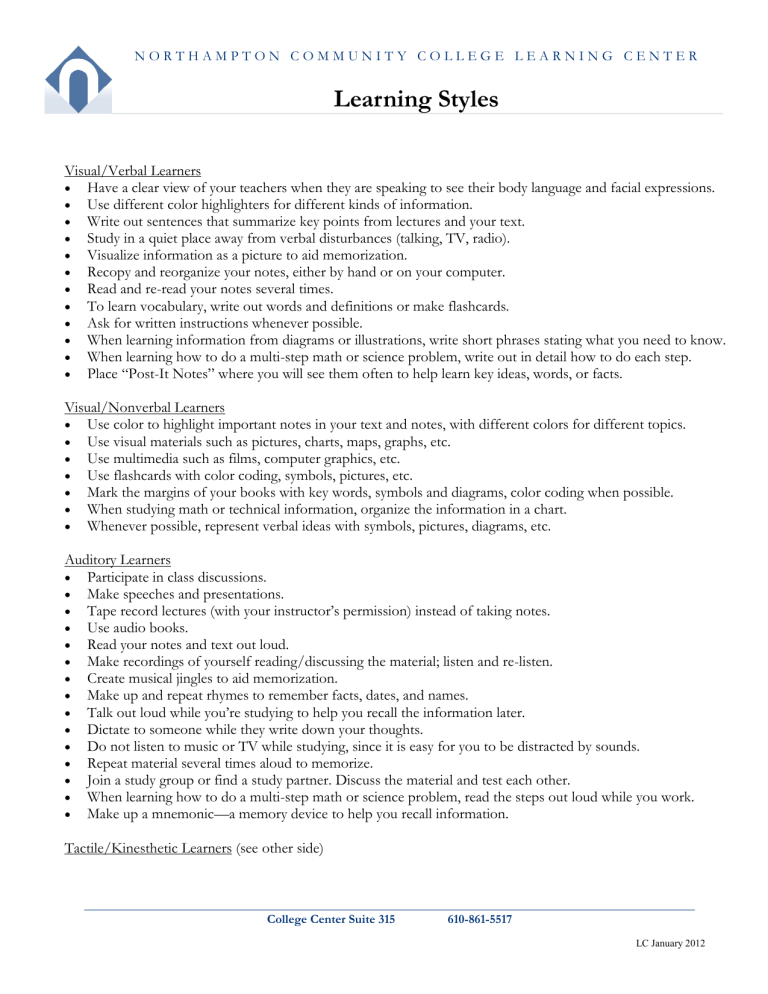
N O R T H A M P T O N C O M M U N I T Y C O L L E G E L E A R N I N G C E N T E R
Learning Styles
Visual/Verbal Learners
Have a clear view of your teachers when they are speaking to see their body language and facial expressions.
Use different color highlighters for different kinds of information.
Write out sentences that summarize key points from lectures and your text.
Study in a quiet place away from verbal disturbances (talking, TV, radio).
Visualize information as a picture to aid memorization.
Recopy and reorganize your notes, either by hand or on your computer.
Read and re-read your notes several times.
To learn vocabulary, write out words and definitions or make flashcards.
Ask for written instructions whenever possible.
When learning information from diagrams or illustrations, write short phrases stating what you need to know.
When learning how to do a multi-step math or science problem, write out in detail how to do each step.
Place “Post-It Notes” where you will see them often to help learn key ideas, words, or facts.
Visual/Nonverbal Learners
Use color to highlight important notes in your text and notes, with different colors for different topics.
Use visual materials such as pictures, charts, maps, graphs, etc.
Use multimedia such as films, computer graphics, etc.
Use flashcards with color coding, symbols, pictures, etc.
Mark the margins of your books with key words, symbols and diagrams, color coding when possible.
When studying math or technical information, organize the information in a chart.
Whenever possible, represent verbal ideas with symbols, pictures, diagrams, etc.
Auditory Learners
Participate in class discussions.
Make speeches and presentations.
Tape record lectures (with your instructor’s permission) instead of taking notes.
Use audio books.
Read your notes and text out loud.
Make recordings of yourself reading/discussing the material; listen and re-listen.
Create musical jingles to aid memorization.
Make up and repeat rhymes to remember facts, dates, and names.
Talk out loud while you’re studying to help you recall the information later.
Dictate to someone while they write down your thoughts.
Do not listen to music or TV while studying, since it is easy for you to be distracted by sounds.
Repeat material several times aloud to memorize.
Join a study group or find a study partner. Discuss the material and test each other.
When learning how to do a multi-step math or science problem, read the steps out loud while you work.
Make up a mnemonic—a memory device to help you recall information.
Tactile/Kinesthetic Learners (see other side)
College Center Suite 315 610-861-5517
LC January 2012
Tactile/Kinesthetic Learners
Sit near the front of the room.
Take notes by jotting down key terms and ideas—use arrows, pictures, etc.
Take frequent study breaks.
Move around to learn new things (i.e. walk around while repeating important concepts, read while on an exercise bike, make or draw a model to illustrate a new concept).
Use the computer to reinforce learning. Typing uses the sense of touch and may reinforce the concepts.
Spend extra time in any labs that are offered, and use hands-on experience as much as possible.
Work in a standing position.
Chew gum while studying.
Use bright colors to highlight reading material.
Listen to music while you study.
Read the chapter summary before you read the chapter to help you identify key points.
Skim through reading material to get a rough idea what it is about before settling down to read it in detail.
Look at chapter subheadings, terms in bold type, text boxes, words in italics, etc.
Use audio tapes from classes and listen to them while you exercise, walk, or drive.
Use flashcards by laying them out in order to explain a process.
Doodle, tap, knit, squeeze a ball while listening (as long as you’re not distracting someone else!).
You may have different learning styles for learning different kinds of materials, so try different approaches to see what works best for you!
